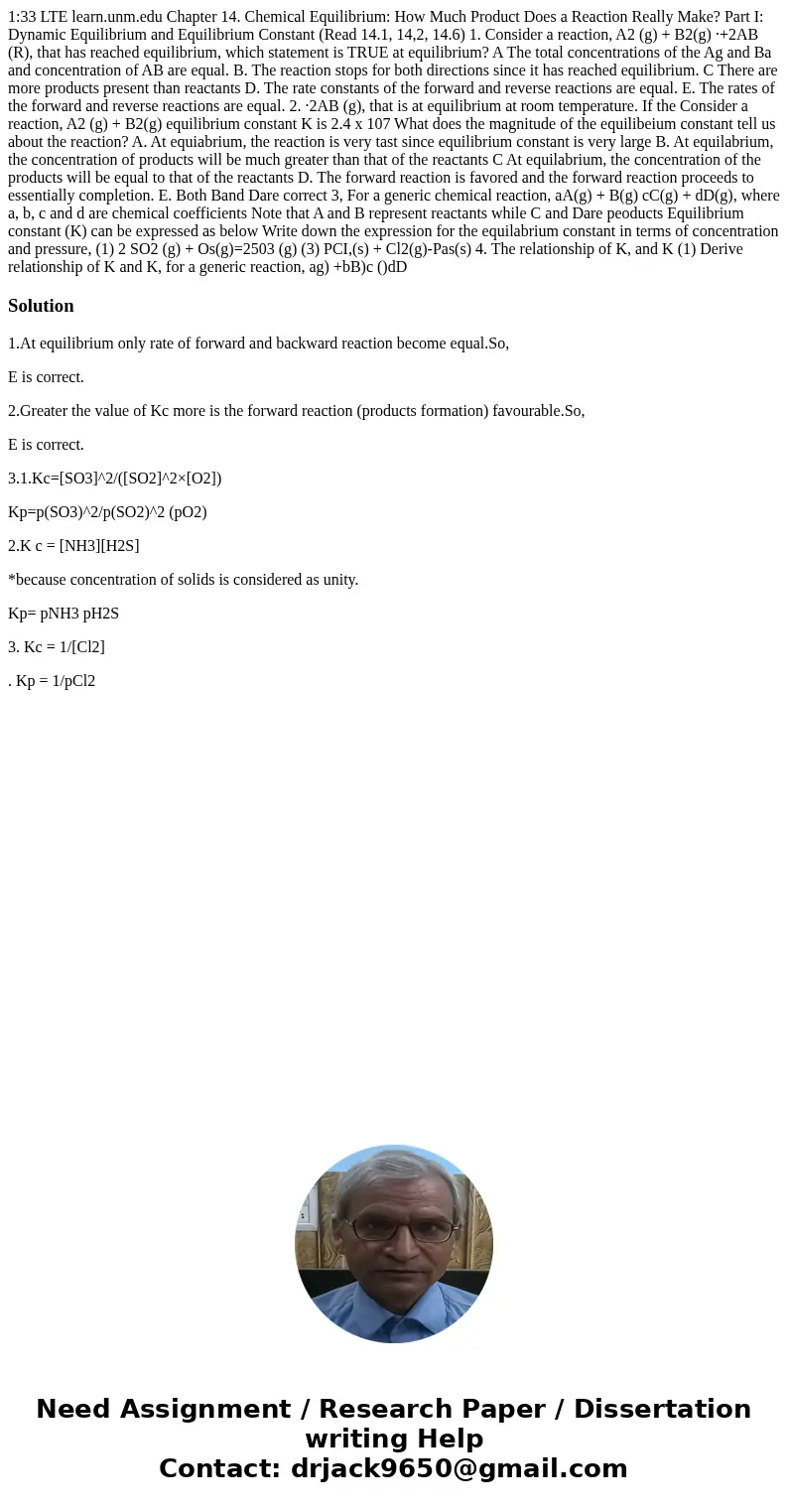133 LTE learnunmedu Chapter 14 Chemical Equilibrium How Much
1:33 LTE learn.unm.edu Chapter 14. Chemical Equilibrium: How Much Product Does a Reaction Really Make? Part I: Dynamic Equilibrium and Equilibrium Constant (Read 14.1, 14,2, 14.6) 1. Consider a reaction, A2 (g) + B2(g) ·+2AB (R), that has reached equilibrium, which statement is TRUE at equilibrium? A The total concentrations of the Ag and Ba and concentration of AB are equal. B. The reaction stops for both directions since it has reached equilibrium. C There are more products present than reactants D. The rate constants of the forward and reverse reactions are equal. E. The rates of the forward and reverse reactions are equal. 2. ·2AB (g), that is at equilibrium at room temperature. If the Consider a reaction, A2 (g) + B2(g) equilibrium constant K is 2.4 x 107 What does the magnitude of the equilibeium constant tell us about the reaction? A. At equiabrium, the reaction is very tast since equilibrium constant is very large B. At equilabrium, the concentration of products will be much greater than that of the reactants C At equilabrium, the concentration of the products will be equal to that of the reactants D. The forward reaction is favored and the forward reaction proceeds to essentially completion. E. Both Band Dare correct 3, For a generic chemical reaction, aA(g) + B(g) cC(g) + dD(g), where a, b, c and d are chemical coefficients Note that A and B represent reactants while C and Dare peoducts Equilibrium constant (K) can be expressed as below Write down the expression for the equilabrium constant in terms of concentration and pressure, (1) 2 SO2 (g) + Os(g)=2503 (g) (3) PCI,(s) + Cl2(g)-Pas(s) 4. The relationship of K, and K (1) Derive relationship of K and K, for a generic reaction, ag) +bB)c ()dD 
Solution
1.At equilibrium only rate of forward and backward reaction become equal.So,
E is correct.
2.Greater the value of Kc more is the forward reaction (products formation) favourable.So,
E is correct.
3.1.Kc=[SO3]^2/([SO2]^2×[O2])
Kp=p(SO3)^2/p(SO2)^2 (pO2)
2.K c = [NH3][H2S]
*because concentration of solids is considered as unity.
Kp= pNH3 pH2S
3. Kc = 1/[Cl2]
. Kp = 1/pCl2

 Homework Sourse
Homework Sourse